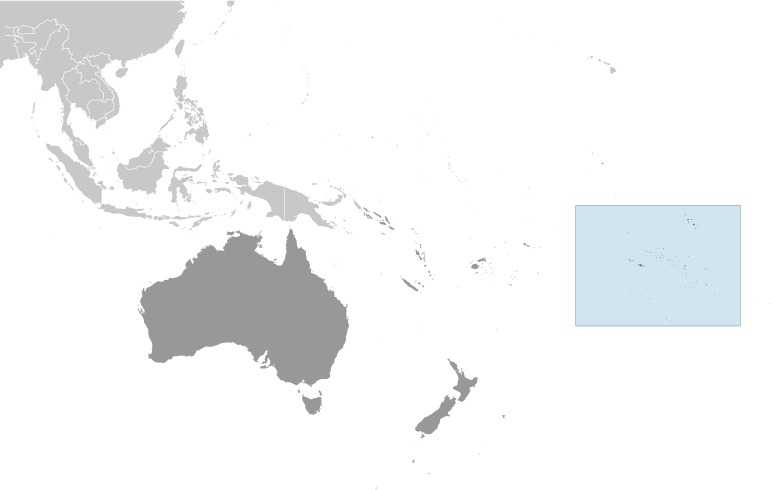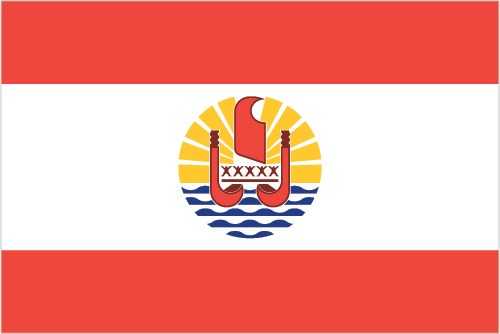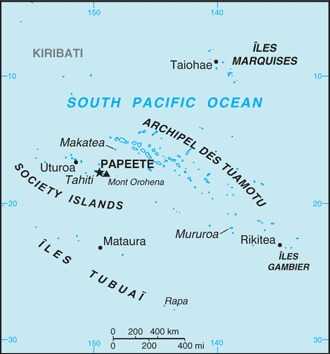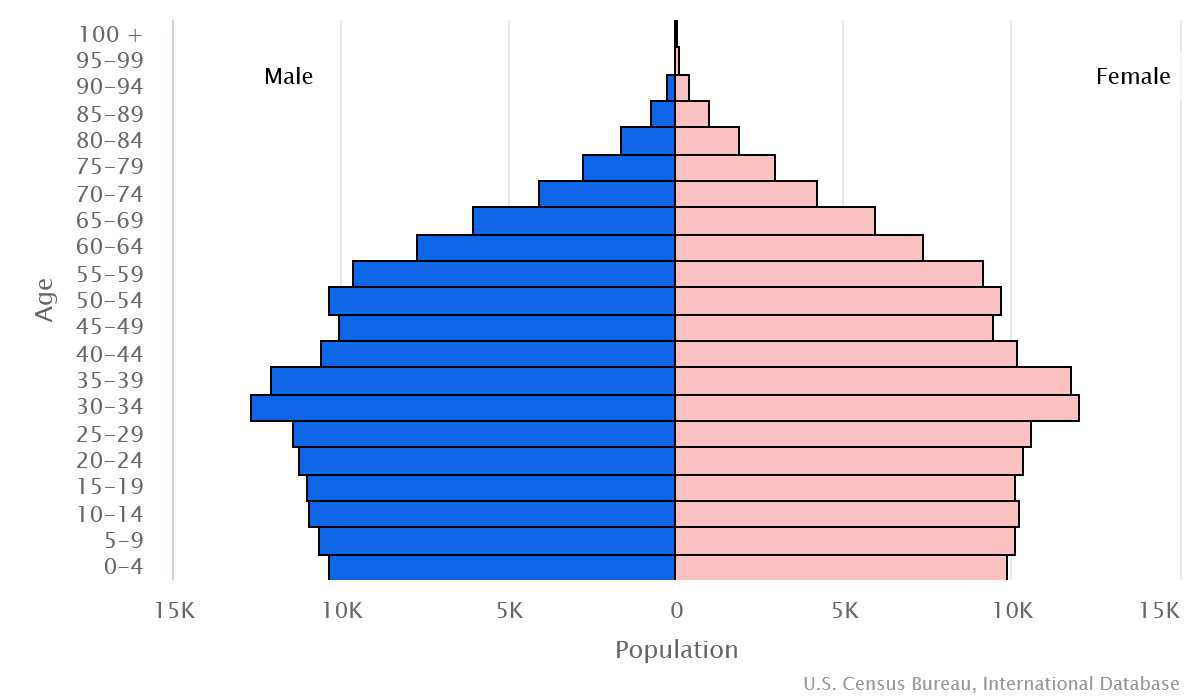Introduction
Background
The French annexed various Polynesian island groups during the 19th century. France controversially used uninhabited atolls to test nuclear weapons from 1966 to 1996. In recent years, French Polynesia's autonomy has been considerably expanded.
Geography
Area
total: 4,167 sq km
land: 3,827 sq km
water: 340 sq km
Climate
tropical, but moderate
Natural resources
timber, fish, cobalt, hydropower
People and Society
Population
total: 303,540
male: 155,138
female: 148,402 (2024 est.)
Ethnic groups
Polynesian 78%, Chinese 12%, local French 6%, metropolitan French 4%
Languages
French (official) 73.5%, Tahitian 20.1%, Marquesan 2.6%, Austral languages 1.2%, Paumotu 1%, other 1.6% (2017 est.)
Religions
Protestant 54%, Roman Catholic 30%, other 10%, no religion 6%
Population growth rate
0.66% (2024 est.)
Government
Government type
parliamentary democracy (Assembly of French Polynesia); an overseas collectivity of France
Capital
name: Papeete (located on Tahiti)
Executive branch
chief of state: President Emmanuel MACRON (since 14 May 2017), represented by High Commissioner of the Republic Eric SPITZ (since 23 September 2022)
head of government: President of French Polynesia Moetai BROTHERSON (since 12 May 2023)
Legislative branch
description: unicameral Assembly of French Polynesia or Assemblée de la Polynésie française (57 seats; elections held in 2 rounds; in the second round, 38 members directly elected in multi-seat constituencies by a closed-list proportional representation vote; the party receiving the most votes gets an additional 19 seats; members serve 5-year terms; French Polynesia indirectly elects 2 senators to the French Senate via an electoral college by absolute majority vote for 6-year terms with one-half the membership renewed every 3 years and directly elects 3 deputies to the French National Assembly by absolute majority vote in 2 rounds if needed for 5-year terms
Economy
Economic overview
small, territorial-island tourism-based economy; large French financing; lower EU import duties; Pacific Islands Forum member; fairly resilient from COVID-19; oil-dependent infrastructure
Real GDP (purchasing power parity)
$5.65 billion (2021 est.)
$5.52 billion (2020 est.)
$5.94 billion (2019 est.)
Real GDP per capita
$18,600 (2021 est.)
$18,300 (2020 est.)
$19,800 (2019 est.)
Agricultural products
coconuts, fruits, root vegetables, pineapples, eggs, cassava, sugarcane, tropical fruits, watermelons, tomatoes (2022)
Industries
tourism, pearls, agricultural processing, handicrafts, phosphates
Exports
$162 million (2021 est.)
$94.4 million (2020 est.)
$184 million (2019 est.)
Exports - partners
France 18%, US 18%, Hong Kong 18%, Japan 13%, Netherlands 9% (2022)
Exports - commodities
pearls, fish, aircraft parts, coconut oil, electrical power accessories (2022)
Imports
$1.66 billion (2021 est.)
$1.75 billion (2020 est.)
$2.24 billion (2019 est.)
Imports - partners
France 30%, China 13%, US 9%, South Korea 6%, NZ 6% (2022)
Imports - commodities
refined petroleum, cars, packaged medicine, beef, plastic products (2022)
Exchange rates
Comptoirs Francais du Pacifique francs (XPF) per US dollar -
Exchange rates:
113.474 (2022 est.)
100.88 (2021 est.)
104.711 (2020 est.)
106.589 (2019 est.)
101.047 (2018 est.)
Page last updated: Wednesday, May 15, 2024




